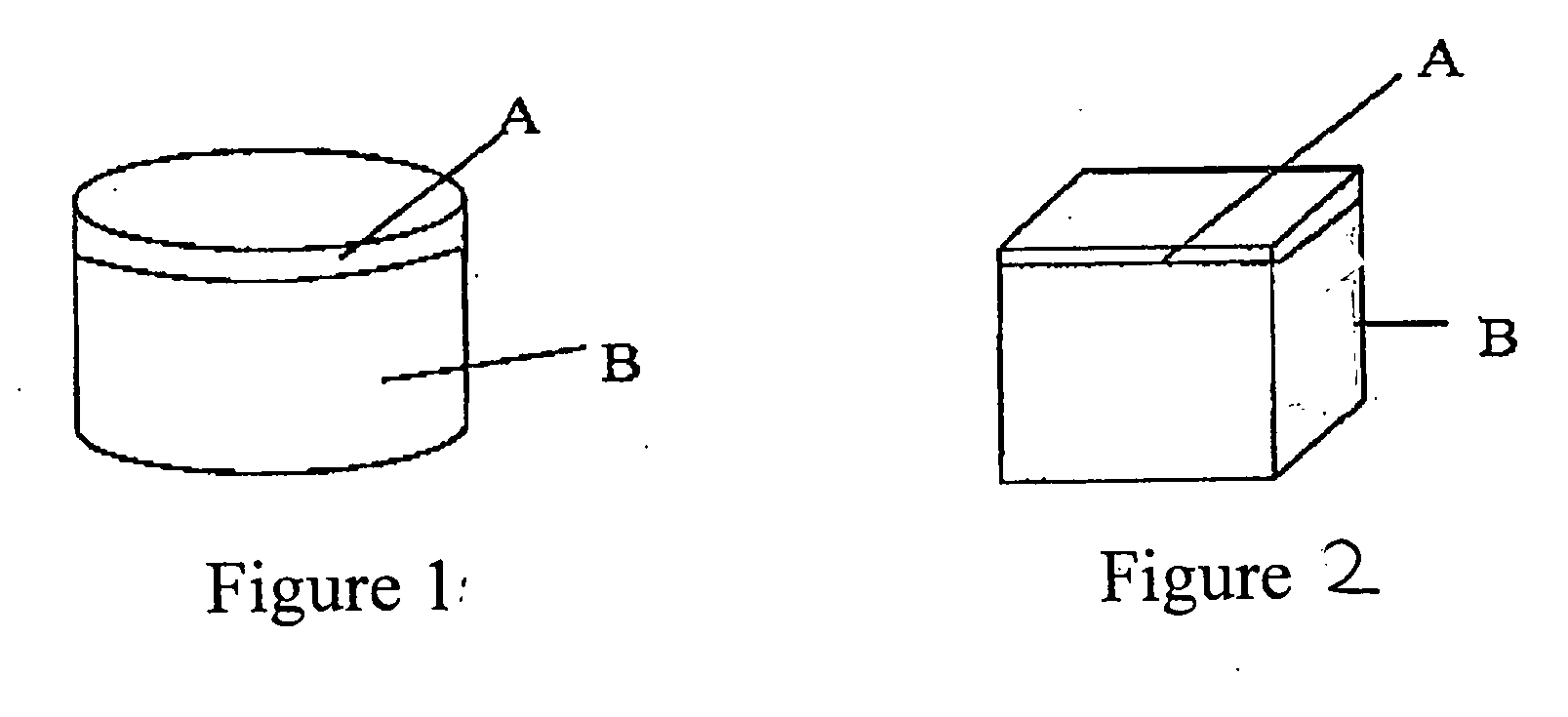Prosthesis for joint cartilage repair and method of manufacture
a cartilage repair and joint technology, applied in the field of medical prosthesis, can solve the problems of serious impact on patient work and daily life, impede joint movement and function, and severe pain in walking, and achieve the effects of promoting bone-cartilage regenerative repair, high expression, and effective immunogen removal
- Summary
- Abstract
- Description
- Claims
- Application Information
AI Technical Summary
Benefits of technology
Problems solved by technology
Method used
Image
Examples
example
[0043]Take a fresh and healthy porcine knee joint, place it in 0.1% benzalkonium bromide sterilization fluid, saturate and disinfect for 30 minutes. Then remove, excise foreign matter that is in the area, carefully cut off the ligaments to expose the joint cartilage, and use special tools to cut to a certain size. The cartilage piece is then placed with the bone pedestal B in a high-permeability cell removal reactor, and add an enzyme solution in order to perform enzymolysis for 2-8 hours, selecting a temperature between 18 and 45° C. A combined pepsin-trypsin enzyme solution whose concentration is 40-200 mg of enzyme per liter is used for enzymolysis. After enzymolysis is completed, perform enzyme elution and deactivation, then place the cartilage piece in a high-permeability fixation reactor (which can be the same reactor as above), add fixation solution, react for 8-96 hours at a reaction temperature between 5 and 40° C. The fixation solution contains 0.1-2.0N epoxide, and the ep...
PUM
| Property | Measurement | Unit |
|---|---|---|
| temperature | aaaaa | aaaaa |
| temperature | aaaaa | aaaaa |
| temperature | aaaaa | aaaaa |
Abstract
Description
Claims
Application Information
 Login to View More
Login to View More - R&D
- Intellectual Property
- Life Sciences
- Materials
- Tech Scout
- Unparalleled Data Quality
- Higher Quality Content
- 60% Fewer Hallucinations
Browse by: Latest US Patents, China's latest patents, Technical Efficacy Thesaurus, Application Domain, Technology Topic, Popular Technical Reports.
© 2025 PatSnap. All rights reserved.Legal|Privacy policy|Modern Slavery Act Transparency Statement|Sitemap|About US| Contact US: help@patsnap.com



